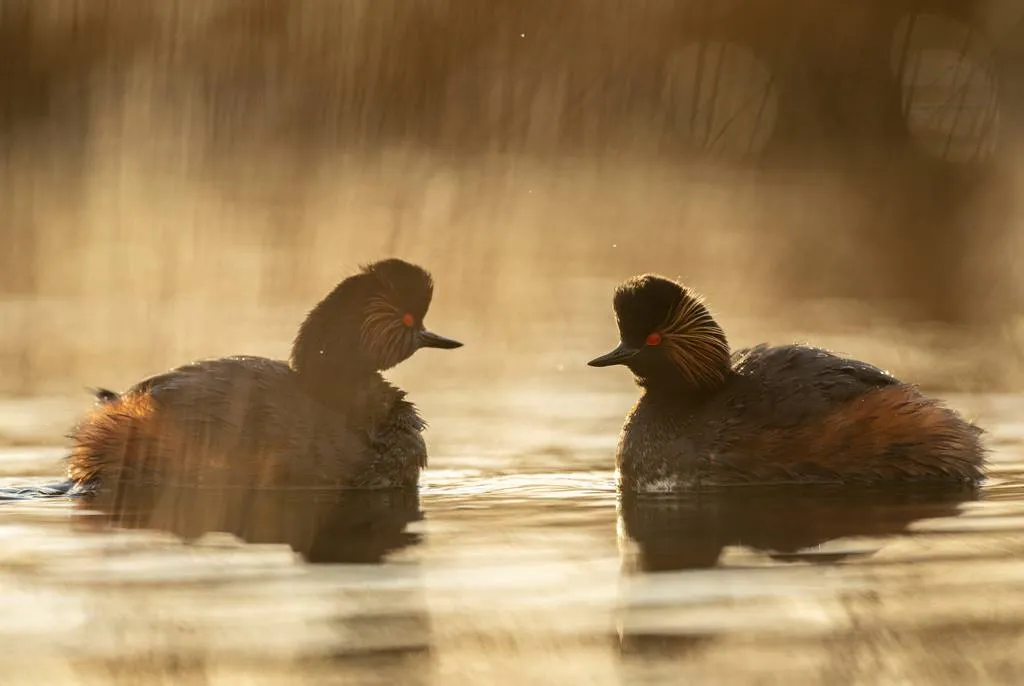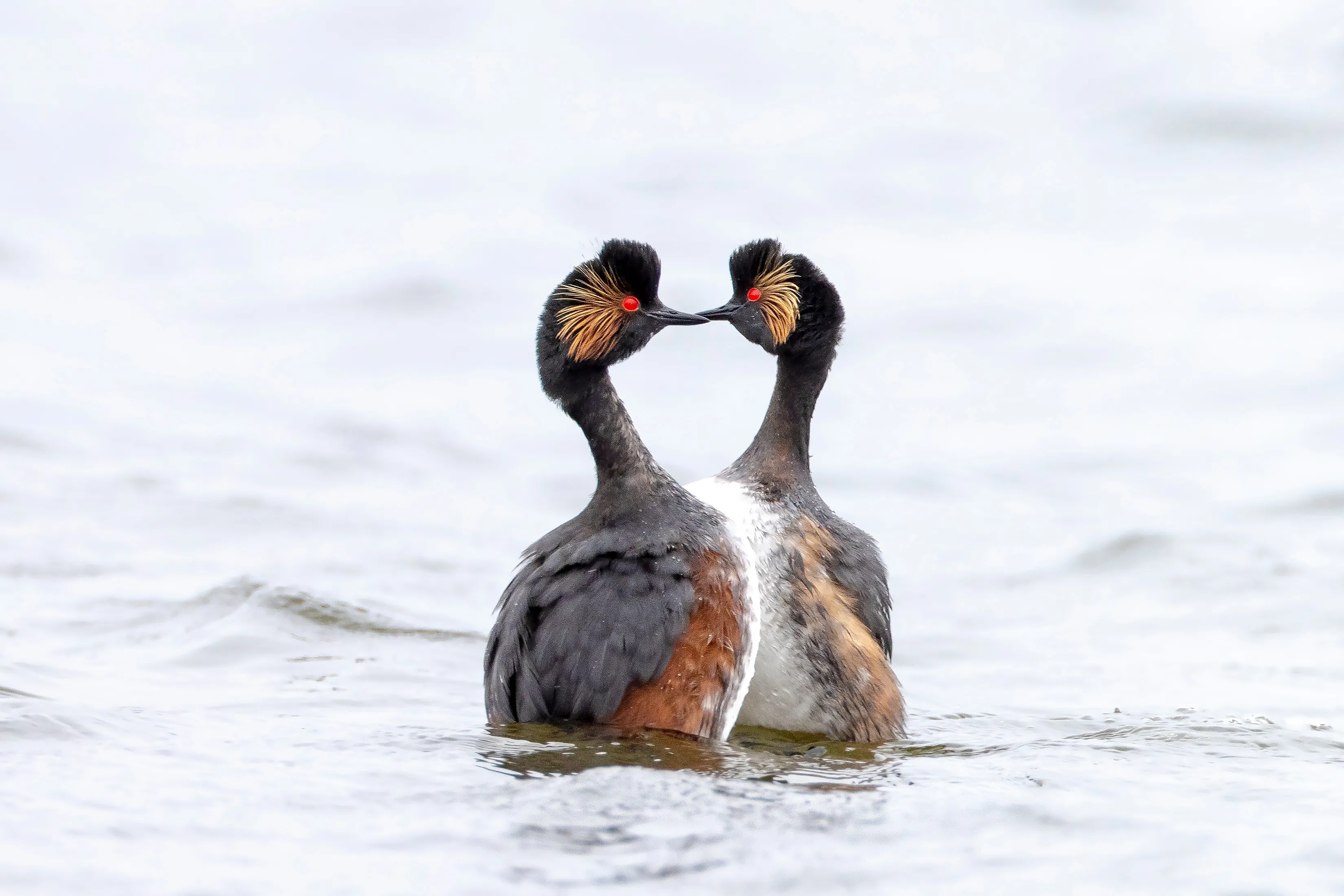News
Win tickets to see the Wild Isles Live Tour
One winner will receive a pair of tickets to join Alastair Fothergill, Wild Isles producer, for an inspiring evening of ...
Black-necked Grebes, one of the rarest breeding birds in the UK, had their best year on record at RSPB nature reserves in 2023.

They’re usually found in reedbeds and other wetlands. These small, glossy black birds have vivid tufts of golden feathers behind their bright red eye. In spring each year, they begin their captivating courtship dance. This sees the male and female swimming in tandem, mirroring each other's movements, wagging heads and culminating in a ‘penguin dance’ as they rise up out of the water, breast-to-breast. Once these efforts to woo a mate are successful, they go on to build floating nests amongst the reeds.

Breeding numbers are on the rise at RSPB nature reserves, especially at RSPB St Aidan’s Nature Park, near Leeds, which celebrated a record year for in 2023. St Aidan’s is now home to around 30% of its UK population, and that’s all down to RSPB conservation efforts.
At the West Yorkshire nature reserve, staff and volunteers carefully manage water levels and create new areas of shallow water and dense reeds where Black-necked Grebes can perform their dance, feed and nest.
The record 18 breeding pairs at RSPB St Aidan’s also fledged the joint second highest count of chicks, 12 in total. The fact that numbers of breeding pairs are increasing offers hope that numbers of fledgling Black-necked Grebes will increase further in the future.

John Ingham, warden at RSPB St Aidan’s, said: “Black-necked Grebes aren’t just one of the rarest breeding birds in the UK – they are also one of the most beautiful. Unmistakable with that piercing red eye, and golden ear tufts, at a distance they may be quite unassuming with their diminutive size, but up close they are simply stunning.
“Based on the successful breeding season last year and mild winter, we would hope for good numbers of Black-necked Grebe again this spring at RSPB St Aidan’s. But as with much of our wildlife, they face many challenges such as loss of wetland habitats, extreme weather events caused by climate change, declines in small fish and invertebrates they rely on for feeding, predation, and potentially, increased incidences of diseases such as avian influenza. These threats make our work to maintain the perfect habitat conditions for wildlife like Black-necked Grebes all the more important, especially if we are to enjoy the arrival of these beautiful birds at RSPB nature reserves for many years to come.”

The numbers of Black-necked Grebes are expected to peak in mid-April before they disappear into the reeds to nest. We’d like to ask you to keep to paths to ensure the chicks have the greatest chance of survival. Thankfully, RSPB St Aidan’s offers brilliant views of Black-necked Grebes from the network of paths.